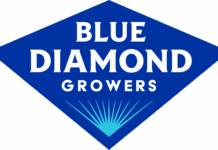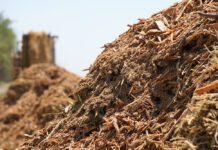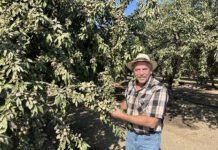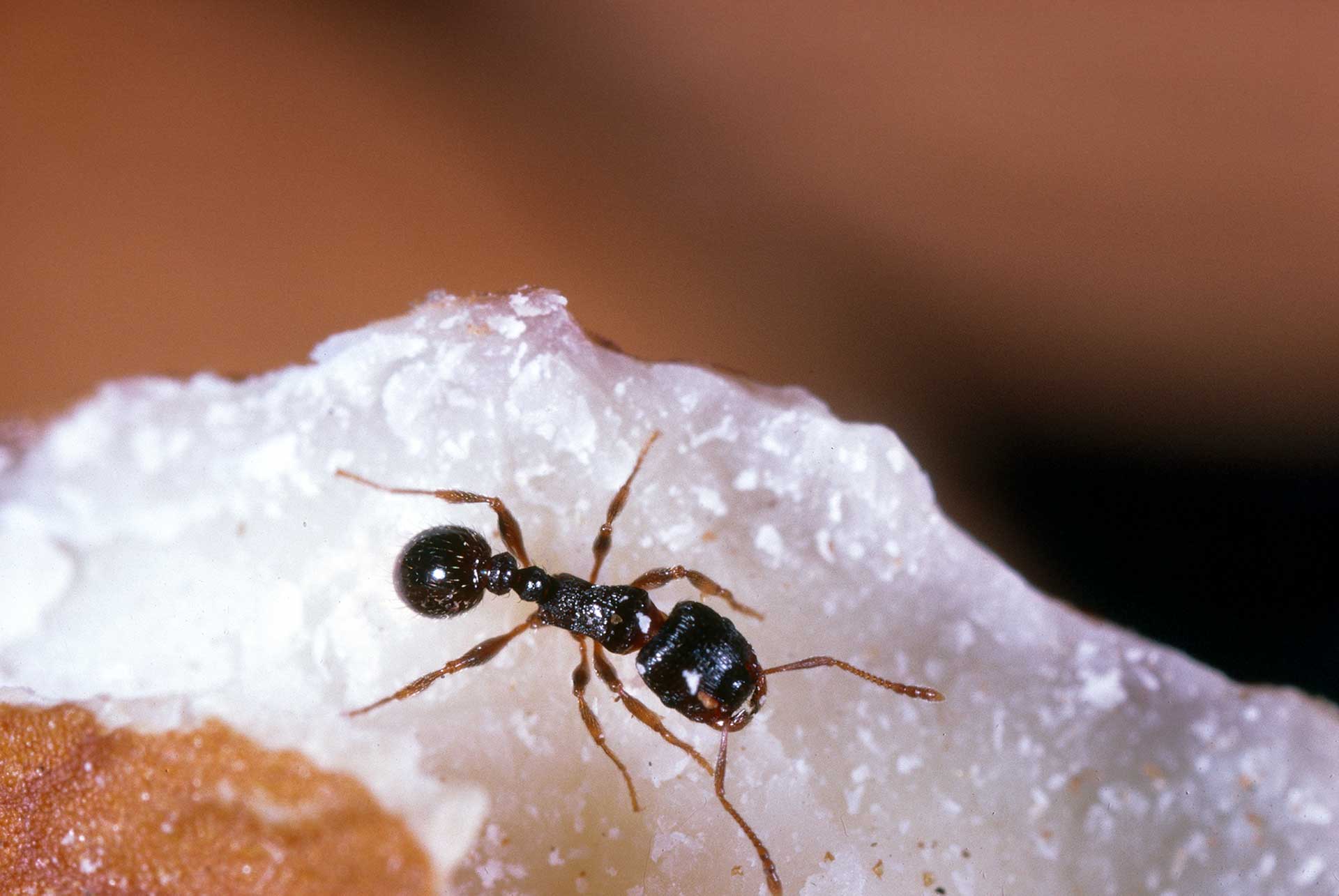
It is not too early in the growing season to begin planning ant control strategies for almond orchards.
“Put it on your calendar, plan ahead,” advises Franz Niederholzer, UCCE farm advisor in Colusa, Yuba and Sutter counties. “Ants are silent yield robbers.”
April to May is the start of ant scouting in San Joaquin Valley almond orchards. Warmer springs in the Sacramento Valley should have growers thinking about looking for ants in their orchards earlier than usual.
If there is a history of ant damage in an orchard, growers and PCAs should be particularly alert for protein-feeding ants in almonds. There is no guarantee of repeat damage, but it certainly is a possibility, Niederholzer said.
Only protein-feeding ants feed on almonds, entering through openings in the shell. Voracious ant feeding can leave a hollowed-out pellicle. Without weight of the kernel, the hull and shell can be blown out of the windrow at harvest, never picked up by the harvester. Those nuts don’t make it on the processor grade sheets and growers may not know the severity of ant damage to their crop, thus the silent yield robbers.
Niederholzer said the longer the nuts are on the orchard floor after shaking, the greater the risk of ant damage. He reported that in 2020, ant damage to almond crops had increased over previous years. That damage may have been caused by extended drying times for nuts on the ground as a result of reduced solar radiation due to wildfire smoke.
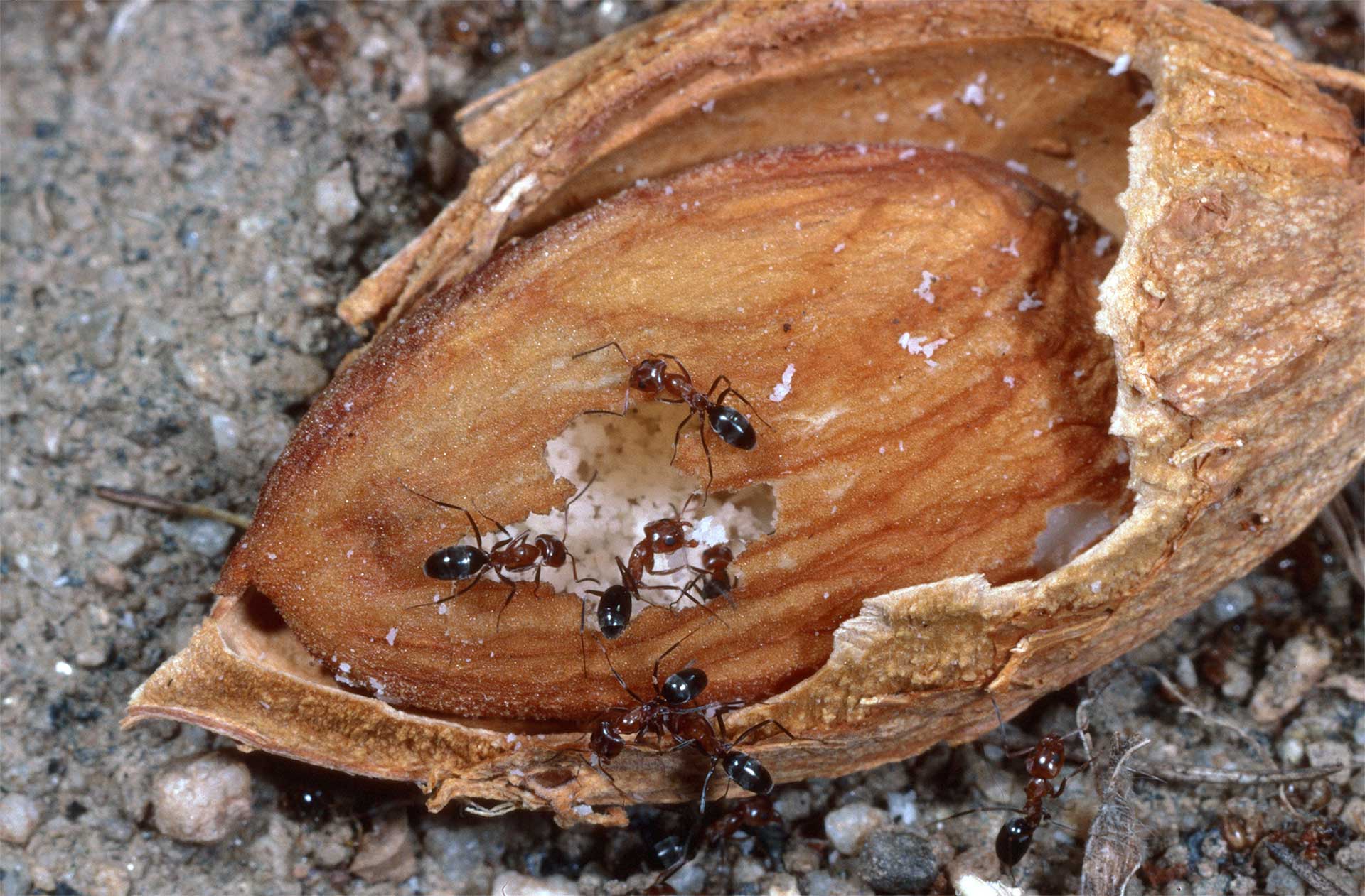
Survey in Mid-Spring and Harvest
UC IPM Guidelines recommend surveying orchards for ant colonies in April or May. There is a correlation in ant damage between number of colonies and the time harvested almonds remain on the ground. UC IPM tables show that finding 15 colonies in April and May in 5,000 sq. ft. can result in 0.9% damage if nuts are on the orchard floor for four days. At 21 days, damage is estimated to be 4.9%. When 185 colonies are found in the same square footage, damage could hit 2% in nuts left on the ground for four days. At 21 days on the ground, damage rates are estimated at near 11%.
Ant damage can also be a hidden problem, not realized until the numbers show on reject sheets from the processor.
Niederholzer recommends that harvest samples be taken when nuts are in the windrows to get an accurate picture of ant pressure in the orchard. This will take into account nuts that are not likely to get picked up due to their light weight.
Taking a harvest sample of 500 nuts per block, cracking them open and looking for ant damage can give a grower or orchard manager an idea of what to expect when the nuts are processed.
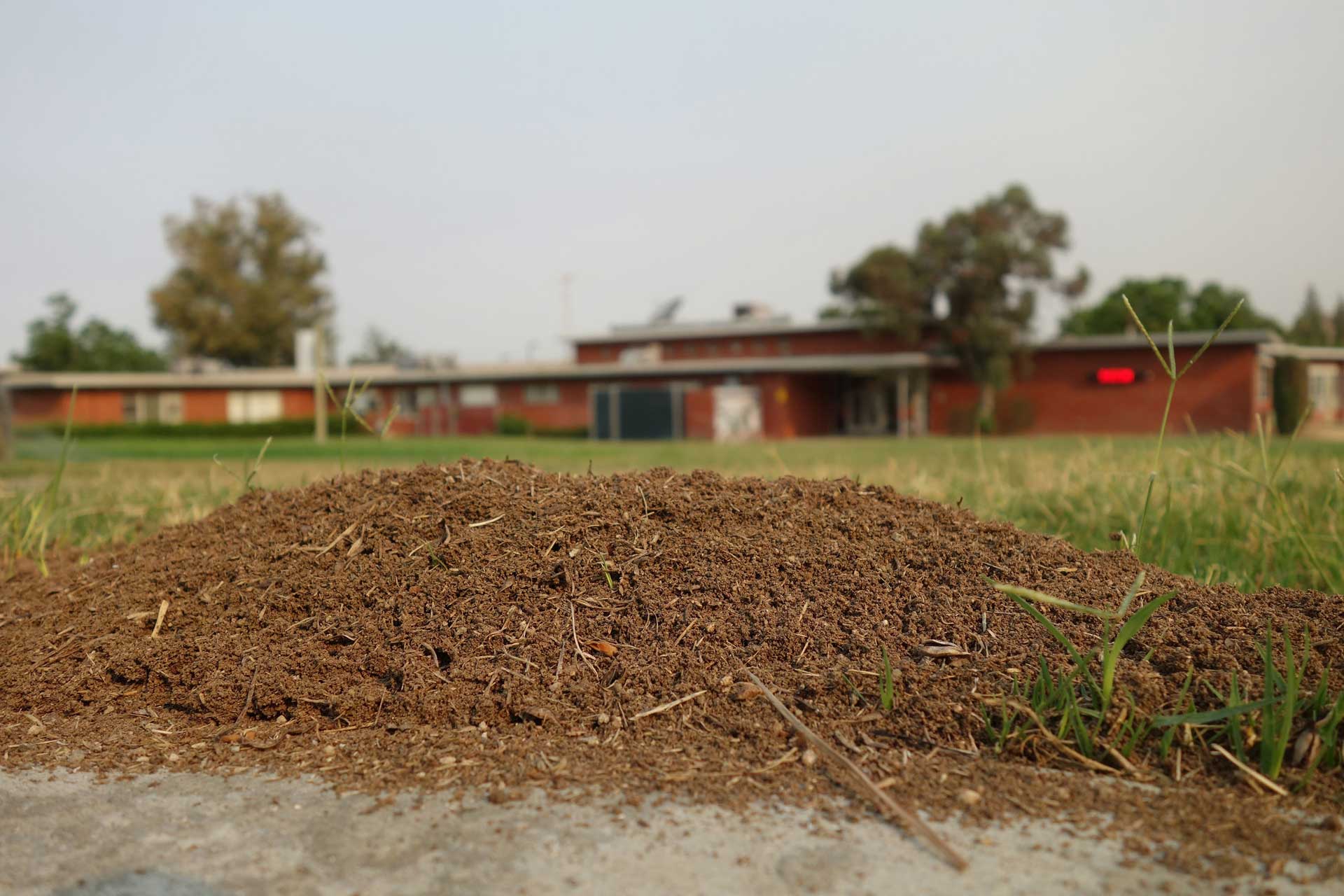
Protein-Feeding Ants
The two species of protein-feeding ants that infest almond orchards are pavement ants and Southern fire ant. Pavement ants are 0.13 inches long, dark brown and covered with coarse hairs. Using a hand lens, ridges on its head can be seen. The pavement ant prefers to nest in sandy or loam soils and the ant hills appear as small mounds or patches of loose soil. This species can be found throughout the Central Valley, but is more common in the northern San Joaquin and Sacramento valleys.
Southern fire ants are 0.07 to 0.25 inch long and have amber heads/thoraxes with a black abdomen. This is the predominant protein-feeding ant in almond orchards. When nests are disturbed, the fire ants will swarm out and deliver painful stings that can cause visible swelling.
Southern fire ant nests are likely to be concentrated around the edges of wetted areas in orchards with drip irrigation. In flood-irrigated orchards with heavy soils, fire ant nests are located mainly on the berms. In lighter soils, nests are found both on the berms and in the middles. Southern fire ant nests are frequently found in clumps of weeds like nutsedge or spotted spurge.
Southern fire ants can be confused with the pyramid ant, a beneficial species that is similar in size. It is a predator of peach twig borer. Pyramid ants do not swarm and attack when nests are disturbed.
UC IPM Guidelines note that damage from protein-feeding ants appears to be less in orchards with clean floors. Damage is also lower in almond varieties with a tight shell seal or with splits less than 0.03 inch wide. Shell seal can also vary from year to year depending on variety, crop size and cultural practices. Heavy crops with small-size nuts appear to have less open shells and lower potential for ant damage.
Orchard surveys will determine need for treatment. Niederholzer said he would not
recommend regular ant control treatment without first scouting for protein-feeding ant species. Scouting is easy, he said, and ant bait is relatively inexpensive. Time spent baiting a block that doesn’t have treatable levels of ants is time not available for other orchard tasks.
Niederholzer said that given the levels of damage associated with even small populations and short time on the ground, the economic threshold is pretty low. “One-percent damage in a 2,000-pound crop is $50 if nuts are $2 a pound. I don’t think control measures, including material and labor, are that costly.”
If an orchard survey indicates the need for control, baits are the recommended material. Foraging ants will collect the bait and take it back to the nest where it eventually kills or sterilizes the queen and developing larvae fail to mature.
Niederholzer emphasized that timing with baits is important.
Bait products, such as Clinch, Esteem and Extinguish, should be applied four to 10 weeks prior to estimated harvest to allow them time to work. Altrevin is a newer bait product that works within days but does not have the residual effect of the others.
Bait quality is important. Niederholzer advised deciding on the product you will use and making sure it is available. The soybean component of the bait can become rancid over time and will not attract ants. Only the amount of bait needed for one season should be purchased.
Soil surface in the orchard should be dry when the bait is applied so the moisture is not absorbed by the bait, reducing its effectiveness.

Cecilia Parsons
Cecilia Parsons has lived in the Central Valley community of Ducor since 1976, covering agriculture for numerous agricultural publications over the years. She has found and nurtured many wonderful and helpful contacts in the ag community, including the UCCE advisors, allowing for news coverage that focuses on the basics of food production.
She is always on the search for new ag topics that can help growers and processors in the San Joaquin Valley improve their bottom line.
In her free time, Cecilia rides her horse, Holly in ranch versatility shows and raises registered Shetland sheep which she exhibits at county and state fairs during the summer.







